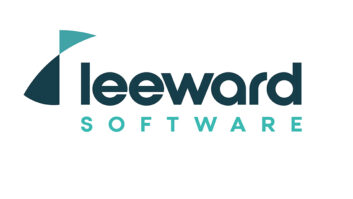Get ready for storage of every type and every flavor at this year’s NAB Show. Storage solutions now run the gamut from high-performance systems — Fibre Channel drives that play in the sub-terabyte spectrum — on through eSATA strap-on drives that address the more cost-conscious needs of simple near-line stores, spinning disk archives, proxy generation, metadata services, and disaster recovery. Now purpose-built server/storage systems are coupled with common variety pizza-box form factors stuffed with terabytes of disks. For these, the real appeal is the application that resides on the platform — those that now support transcoding, short-term caches or content logging. These applications don’t require the horsepower of full-fledged mission-critical servers, and can be part of a system package or as components the users integrate themselves.
For the high-performance, mission-critical platforms, some products now employ switch fabrics that are built directly into a single multidrive array chassis. Legacy storage arrays, those using JBOD (just a bunch of discs), are changing their architectures in support of SBOD (switched bunch of discs) systems with a built-in Fibre Channel switch fabric that replaces stubborn Fibre Channel-Arbitrated Loop configurations with point-to-multipoint switched fabrics. These new storage arrays support higher bandwidth, superior performance disk systems, and also mitigate the need to add costly external Fibre Channel switches for expansion.
High-definition servers with HD encoders and decoders are flourishing. Many play-out decoders now have extended capabilities including up/down or cross conversion, and horizontal/vertical expansion for those letter-box/pillar-box clips that should be filling the entire HD raster. Furthering support for automated sophistication, Active Format Descriptors (AFD) now enable intelligent decisions to be made when a clip suggests some form of aspect ratio conversion. AFD codes, once included universally by content delivery services, may alleviate the guess work of deciding if the advertiser permits an aspect ratio conversion that might otherwise alter the aesthetic intentions of the commercial content.
Of course, with HD comes a new set of file and compression format decisions. Careful consideration for where you are today, and where you might want to be tomorrow, is essential when looking at the requirements for the multiplatform/multiformat media world.
First you need to look at the traditional baseband (digital video) ingest; and then second, you must deal with file-based delivery directly into storage. If you’re absolutely sure you’ll never ingest content through the baseband ports, then you’re squarely sitting in the external file delivery service’s domain. File interchange, transcoding, bit rate requirements and storage size impacts all need to be considered before a server decision is made. Once you enter the file domain, the video server is no longer the only governing influence on how you operate.
Finally are the issues of control and functionality. Users once focused on video servers as VTR replacements. Today, the capabilities in automation and intelligent controls far exceed simple VTR functionality. The interfaces to these new server platforms extend beyond VDCP or RS-422 cables; they include Ethernet connections that not only emulate VTR control, but are also the gateway for file interchange, remote diagnostics, metadata exchange for asset management and more. There’s no common denominator or universal choices any longer, and feature sets may not be extensible to all automation platforms or asset management systems. Understand the needs and get the answers — before writing the purchase order.
Karl Paulsen is Chief Technology Officer for AZCAR Technologies.











